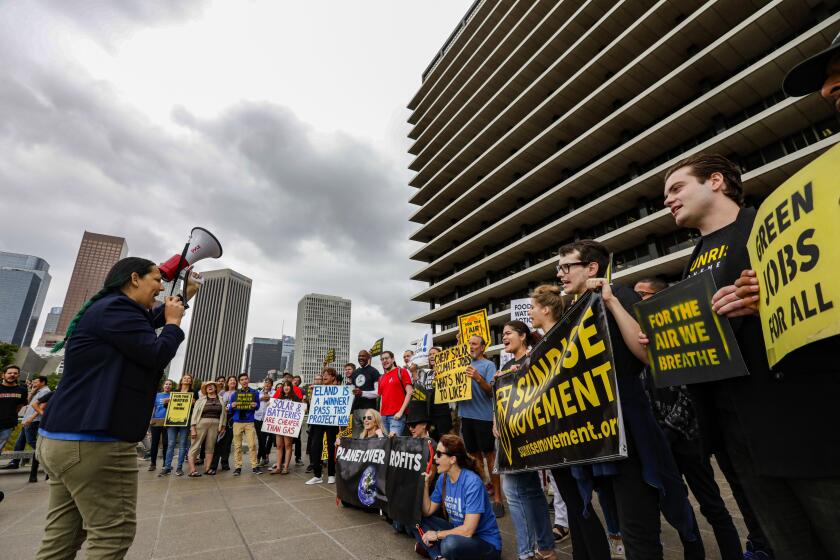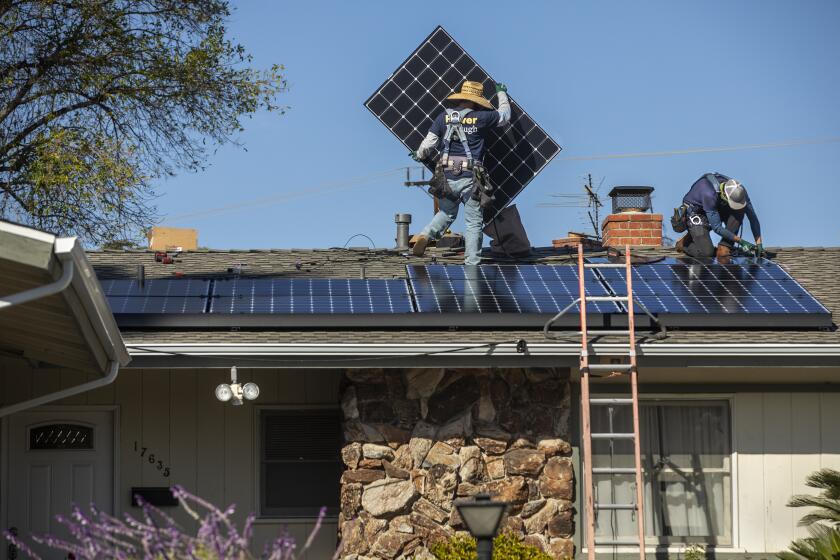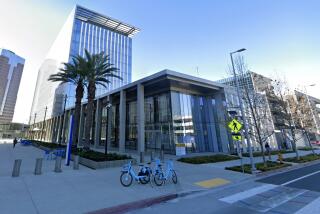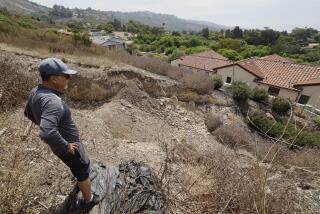Editorial: Water and power are essential. Disconnecting services when people can’t afford to pay is cruel
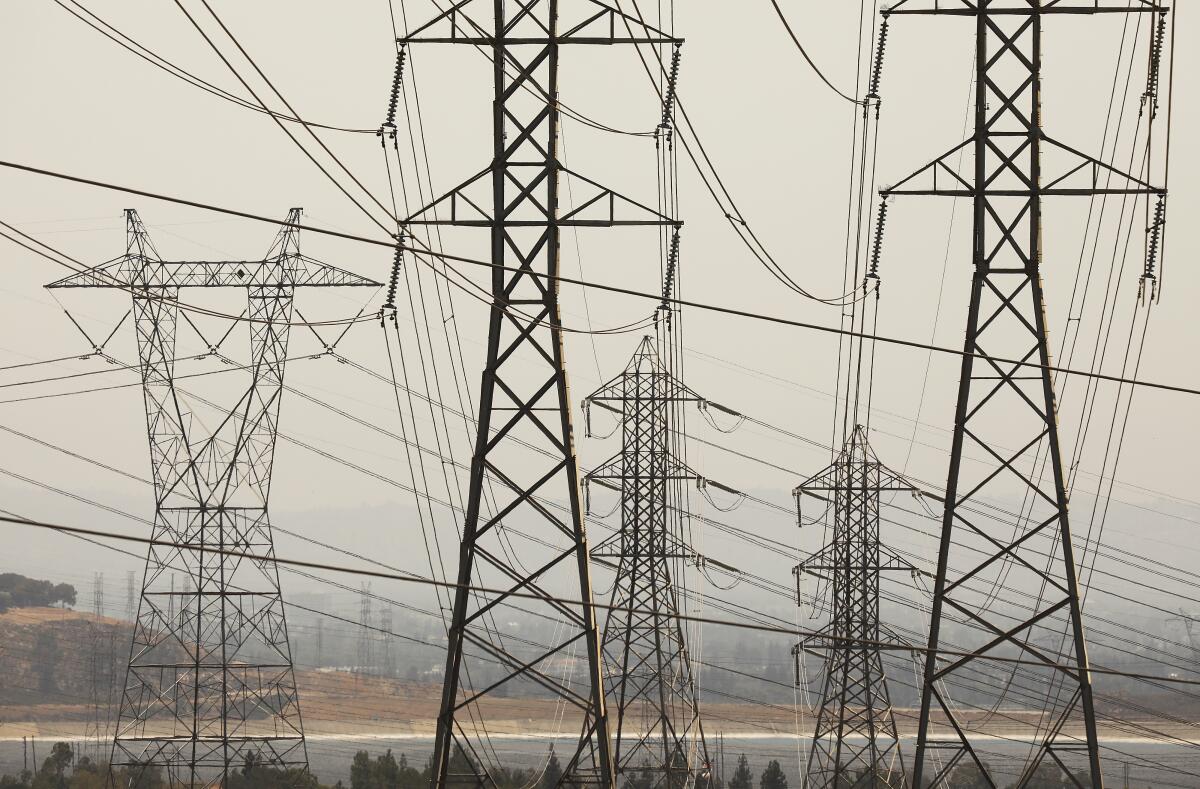
The Los Angeles Department of Water and Power has made a radical but logical decision: The utility will no longer shut off service when low-income residents and seniors can’t pay their bills. Instead, those customers will be put on payment plans that can stretch over several years, offered incentives to help lower their water and power use and, if they qualify, be enrolled in federal programs to help households in poverty pay for utilities.
It’s an important change, recognizing that water and power are essential services. It’s cruel to cut people off if they fall behind on their bills due to financial hardship.
Disconnecting service has been the common practice by utilities when customers don’t pay their bills. That changed during the COVID-19 pandemic, when states ordered people to stay at home and millions of Americans lost their jobs due to business closures. Governors in dozens of states, including California, temporarily barred utilities from cutting off customers’ gas, water and electricity for nonpayment. Many utilities voluntarily ceased shutoffs, as well.
The DWP has to modernize its rates to match the rapidly changing electricity market and facilitate the transition to cleaner, greener energy.
The disconnection moratoriums have expired, but the idea of ending shutoffs as a debt collection tactic didn’t go away. In Los Angeles, advocates have pushed the DWP to stop disconnections, arguing they disproportionately happen in low-income neighborhoods, and households in Black and Latino-majority communities were twice or more likely to experience a shutoff than other groups.
Utility debt can be an effect of poverty. People who live in older housing may have less efficient heating and appliances, pushing up energy bills. A broken pipe or leak can quickly drive up water bills. DWP customers, who are billed every two months, can be shocked by unexpectedly high charges they cannot quickly pay off. Moreover, customers may not even know help is available.
Between January 2018 and January 2020, about 50,000 customers had their service disconnected, according to the DWP. Of those, only 4% had taken advantage of an energy efficiency program, and only one quarter or less had signed up for a payment plan or gotten federal utility assistance.
California regulators revise plan to slash incentives for rooftop solar. It’s not as drastic as before, but that doesn’t make it a reasonable compromise.
“We do recognize there are other customers who need more assistance and less menace,” said Board of Water and Power Commission President Cynthia McClain-Hill, who spearheaded the policy, which was adopted by the board earlier this month.
The city-owned utility had been planning to reinstate shutoffs in May 2023 for non-discounted customers and September 2023 for low-income customers enrolled in discount plans. Southern California Edison, the investor-owned utility that serves much of Southern California outside the city of L.A., has recently resumed disconnections.
The DWP’s shutoff protection applies to about 236,000 low-income residential customers, but the utility is also considering ending disconnections for small businesses and landlords who rent to low-income tenants. In addition, the DWP will no longer disconnect water and power service for any customer during extreme weather events. That’s important because climate change is fueling more dangerous and frequent heat waves, and the inability to run a fan or air conditioner can be deadly.
The utility received $330 million in federal COVID-19 relief and was able to wipe out debt accrued during the pandemic for about 300,000 residential customers. There’s still a need to aid households that continue to struggle, but the DWP’s options are limited. As a municipal utility, the DWP cannot forgive debt. Changes to the utility’s rate structure, including its discounted rates for low-income customers, have to be approved by voters. California in 2012 declared access to clean and affordable water a human right, but the state hasn’t provided funding to ensure all households can afford water.
Discontinuing shutoffs helps, but there is a lot of work to ensure the poorest customers can afford service that is getting more expensive as the utility adjusts to drought, climate change and clean energy targets.
More to Read
A cure for the common opinion
Get thought-provoking perspectives with our weekly newsletter.
You may occasionally receive promotional content from the Los Angeles Times.
